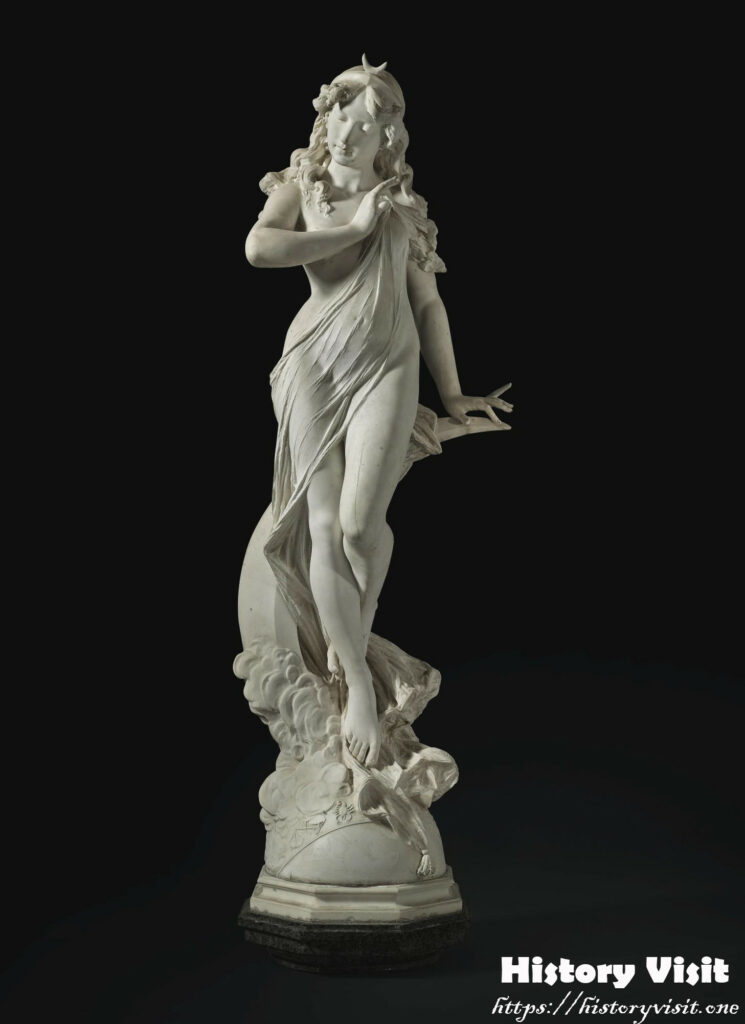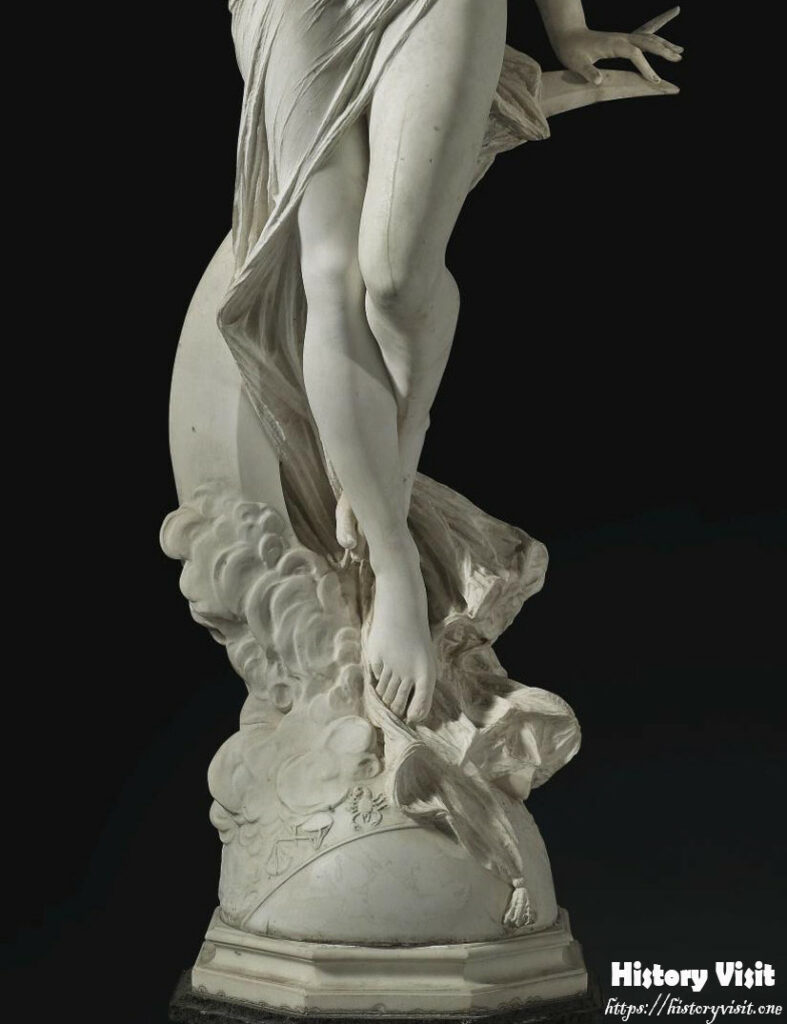A Celestial Ode: Antonio Frilli’s ‘Diana’ (1902)

In the realm of art, certain sculptures transcend their physical form, encapsulating the essence of myth and beauty. Antonio Frilli’s ‘Diana,’ sculpted in 1902, stands as a testament to this transcendence, weaving together myths, historical facts, and the unparalleled talent of its creator. As we embark on a journey to unravel the myths and rumors surrounding ‘Diana,’ delve into the life of Antonio Frilli, explore the reasons behind this sculptural marvel, and assess its impact on the world of art, we find ourselves immersed in the celestial allure of a masterpiece.
Myths surrounding Diana, the Roman goddess of the hunt, wilderness, and the moon, have pervaded ancient cultures for centuries. Often depicted as a virginal and independent figure, Diana’s stories traverse through Roman mythology, where she is identified as the counterpart to the Greek goddess Artemis. Tales of her prowess as a huntress, protector of nature, and embodiment of lunar radiance have added layers of mystique to the goddess. Rumors and folk tales have further embellished her narrative, with whispers of divine encounters and mystical powers contributing to the enigma surrounding Diana.

Historically, Diana has been celebrated in art and literature, embodying ideals of feminine strength, independence, and connection to nature. Her representation has evolved across various periods, from classical sculptures to Renaissance paintings, each capturing a facet of her multifaceted persona. Against this backdrop, Antonio Frilli’s ‘Diana’ emerges as a manifestation of the timeless allure of the goddess.
Antonio Frilli, born in Florence in 1860, hailed from a family of skilled craftsmen. His early life immersed in the cultural ambiance of Renaissance Florence undoubtedly played a pivotal role in shaping his artistic inclinations. Before ‘Diana’ (1902), Frilli had already distinguished himself as a talented sculptor, with works that showcased his mastery of form and a keen understanding of classical aesthetics.
Frilli’s artistic journey was marked by an unwavering dedication to his craft. His early sculptures reflected a nuanced approach to anatomy and a profound appreciation for the interplay of light and shadow. It was this foundation that laid the groundwork for ‘Diana,’ a sculpture that would epitomize Frilli’s ability to breathe life into marble and capture the essence of a mythic goddess.
The decision to sculpt ‘Diana’ in 1902 was not arbitrary; it stemmed from a convergence of classical inspiration and Frilli’s desire to contribute to the pantheon of artistic representations of the goddess. The story behind the sculpture likely involves Frilli’s fascination with the ideals Diana embodied — strength, independence, and a connection to the natural world. ‘Diana’ became a personal and artistic exploration, a testament to the timeless allure of the goddess and a celebration of feminine strength.

The dedication to building ‘Diana’ showcases Frilli’s commitment to excellence in his craft. The sculpture, hewn from Carrara marble, exhibits a meticulous attention to detail, capturing the fluidity of Diana’s movement and the ethereal quality of her celestial presence. Frilli’s skill in rendering textures, from the flowing drapery to the intricate details of Diana’s bow and arrow, reflects a mastery of technique that elevates the sculpture beyond a mere representation of the goddess.
The impact of ‘Diana’ on the world of art is profound. Antonio Frilli’s masterpiece became a symbol of the enduring fascination with classical mythology and the timeless ideals embodied by the goddess. The sculpture’s presence in both public and private collections attests to its lasting influence, inspiring subsequent generations of artists who sought to capture the grace and strength inherent in Diana’s character.

As we gaze upon ‘Diana,’ we are invited to contemplate not only the sculptural mastery of Antonio Frilli but also the enduring significance of classical ideals. The sculpture transcends its historical context, becoming a beacon of beauty and strength that resonates with audiences across time and space. ‘Diana’ is not merely a representation; it is a celestial ode to the timeless allure of myth and the artistic brilliance of Antonio Frilli.
In conclusion, Antonio Frilli’s ‘Diana’ (1902) stands as a testament to the enduring power of classical mythology and artistic craftsmanship. The myths and historical context surrounding the goddess Diana converge in this masterpiece, creating a sculpture that captures the essence of a timeless ideal. As ‘Diana’ continues to grace galleries and captivate admirers, it serves as a reminder of the profound impact art can have in immortalizing mythic beauty and elevating the human spirit.


